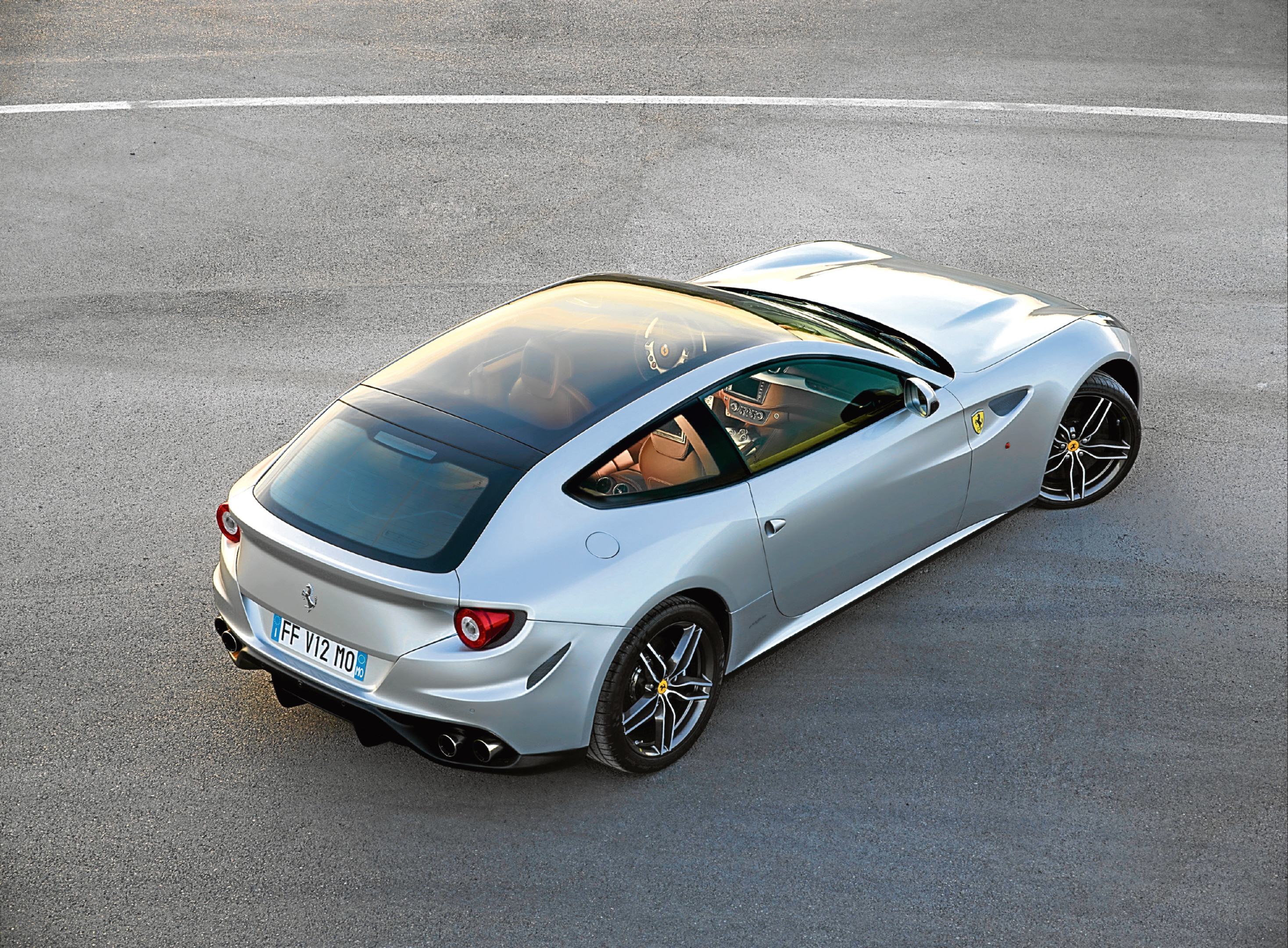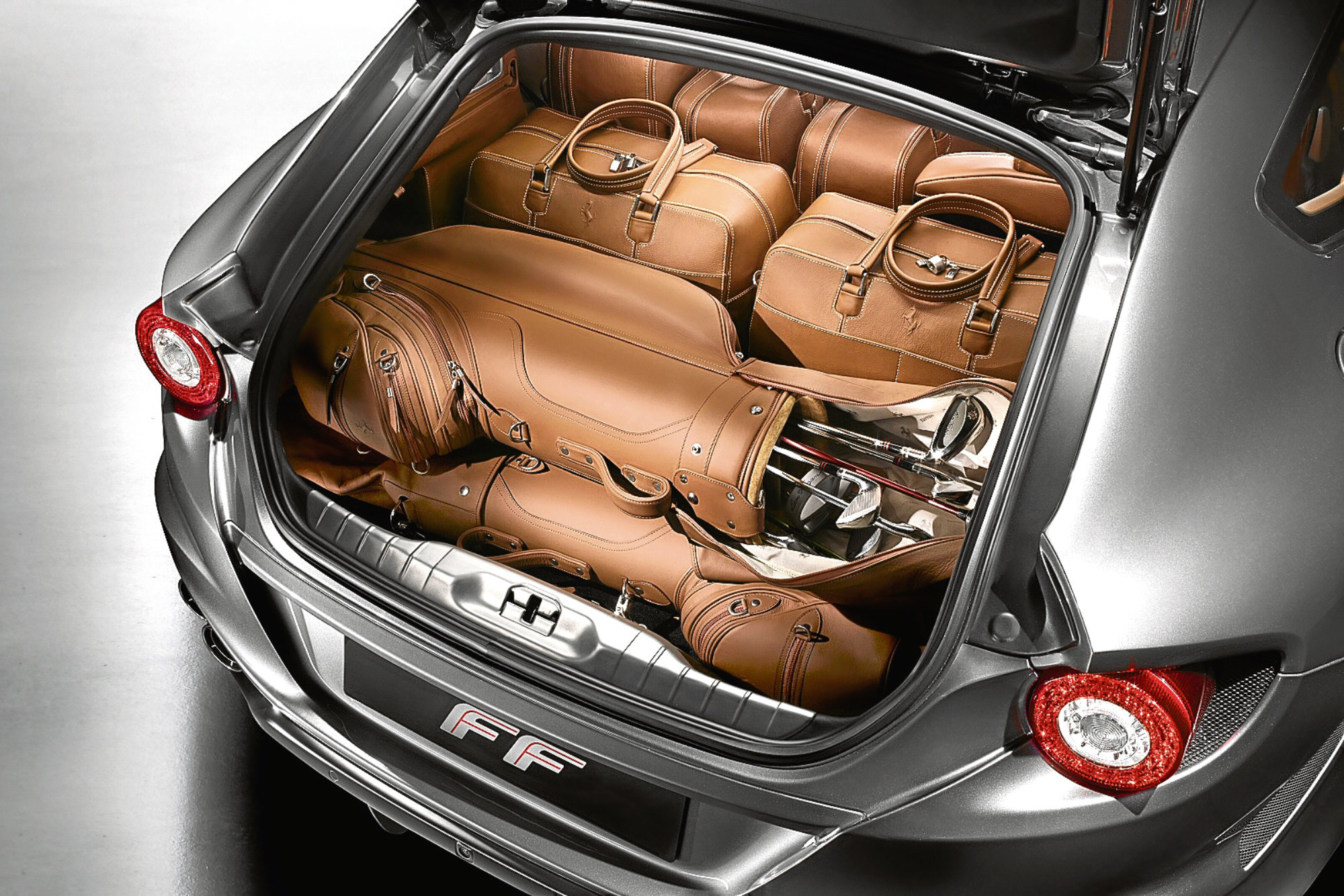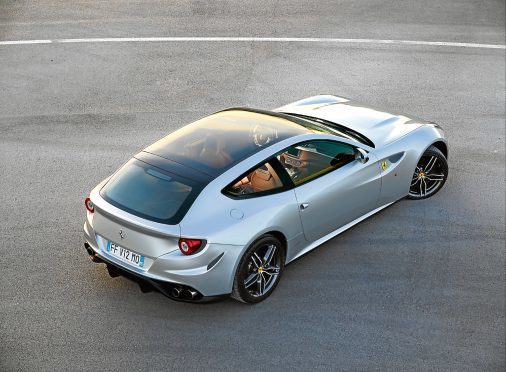It’s taken Ferrari a while to develop a four-wheel drive production car but the FF is nothing short of astonishing.
A thoroughly modern front-engined Ferrari with all-wheel drive and four seats, it’s like no vehicle ever to wear the Prancing Horse. One thing’s for sure – it’s hard to ignore.
When developing the rocketship 599 GTO, Ferrari discovered that putting so much power through the rear wheels of a front-engined car could frequently make the vehicle borderline undriveable, especially in the wet. Needing to rely heavily on its electronics to prevent an unwelcome entry at wreckedexotics.com, the 599 GTO’s specialist clientele accepted its spiky nature in return for a wild and singular ownership experience.

That sort of dynamic repertoire would be less apposite in a four-seater Ferrari, a car the Italian company needed on its books with the 612 Scaglietti getting long in the tooth and Porsche muscling in towards Ferrari’s heartland with its Panamera. The FF was the solution; an all-wheel drive car with distinctive styling and some fascinating technology under the controversial bodywork.
With so much focus on its styling and its interior accommodation, it’s easy to overlook the fact that the Ferrari FF is a genuine big hitter. Its 6.3-litre V12 features direct fuel injection and cranks out 651bhp at a screaming 8,000rpm. Using a double-clutch F1 seven-speed gearbox, it can get from 0-62mph in 3.7 seconds and run on to 208mph. Don’t for a moment think Ferrari has gone soft with the FF.
It’s not Ferrari’s first four-wheel drive car, that distinction going to the 408 prototype of 1987, but it is the first such car to make series production. In the 408, a clever hydraulic coupling directed drive to the front wheels when traction was lost at the back. The FF’s 4RM transmission uses a similar system but instead of a huge propshaft running from front axle to rear, the FF features a hydraulic coupling running from the front of the engine to direct the drive to the front wheels via half shafts. The payoff is a four-wheel drive system that weighs 50% less than conventional systems. The rear wheels are driven via a lightweight propshaft that only needs to run from the very back of the rear-slung gearbox.

The Ferrari FF (which stands for Ferrari Four, thus generating all sorts of brain-numbing tautologies) isn’t a car that rests easily on the eye. Unveiled at the 2011 Geneva Show, it has challenging angles and is very colour sensitive. Almost universal opinion cited that the white display car at the Geneva Show worked a whole lot better than the red one. I was able to lever myself into the back of one and can confirm that space is indeed reasonably good. I’m 6ft 4in and could fit into the rear seats without the front seat being wrenched forward on its runner, though headroom was a little tight. Seeing video entertainment screens in the headrests of a Ferrari was certainly a new one on me.
The 450-litre boot can be extended to 800 litres as the rear seats fold down independently. This means that the FF offers more luggage space not only than any other car in its category, but also many four-door saloons. I reckoned I might get a pair of skis in diagonally. There can’t be many cooler cars in which to arrive at Courchevel.
The interior styling won’t be a great surprise to anyone who owns a current Ferrari. Features include the rear-seat infotainment system with two screens for watching TV and DVD and a 1,280-watt, 16-channel stereo system with Dolby Surround Sound. Other equipment included as standard? Brembo carbon ceramic brakes and some ultra lightweight aluminium wheels for starters. Go easy on the optional winter tyres though. They’re rated to a mere 180mph.
The value proposition is harder to assess. For some buyers an asking price some distance north of £200,000 will cause them to look elsewhere while for others the concept of an all-weather Ferrari will be impossible to resist whatever price. With Ferrari’s order book for the FF sold out for 18 months in advance, it seems there is plenty of the latter.
With demand holding up extremely strongly, residual values also look bulletproof. It’s hard to see anybody losing significant money by buying a Ferrari FF and running it for a year, for the time being at least. That was never something we could really say about the 612 Scaglietti.
As well as being a decent investment, the Ferrari has also undertaken some quite serious work aimed at reducing the CO2 emissions and improving the efficiency of the V12 engine. Despite weighing in at a big-boned 1,790kg, the FF emits just 360g/km of carbon dioxide which while a hefty amount in relation to more prosaic cars, isn’t far off that of the lighter, less powerful 458 Italia. Featuring a start/stop system to kill the engine in stationary traffic, the FF will even return an average of 18.3mpg, again a comparatively impressive figure given its gargantuan power output.
The Ferrari FF is always going to be an acquired taste. Its extreme styling and rarefied price tag will always see to that. What’s not up for debate is the ingenuity of its engineering, nor the unrelenting focus on making that engineering both effective and efficient. The Italian company is plum in the middle of a rich vein of form at present and the FF continues that streak.
With room for four and plenty of luggage capacity in the back, Ferrari claims the FF is a car that opens Ferrari ownership to those looking for a more practical and robust type of vehicle. If your wallet can stand it and the styling appeals, it’s a car that would be very hard to resist.
THE FIGURES
- Model: Ferrari FF
- Price: Above £200,000
- Engine: 6.3-litre V12 producing 651bhp
- Transmission: Double-clutch F1 seven-speed
- Performance: 0-62mph in 3.7 seconds, top speed 208mph
- Economy: 18.3mpg
- CO2 emissions: 360g/km
